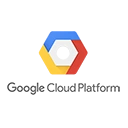Google Cloud Functions for IoT is a powerful serverless computing service that allows you to build IoT (Internet of Things) applications without the need to manage servers. In this guide, we'll explore the key concepts and use cases of Cloud Functions for IoT and provide a sample code snippet for creating a basic Cloud Function for an IoT application.
Key Concepts
Before we dive into the code, let's understand some key concepts related to Google Cloud Functions for IoT and serverless IoT applications:
- Serverless Computing: Cloud Functions are serverless, meaning you don't need to provision or manage servers. They automatically scale to handle incoming requests and execute code in response to IoT events.
- IOT Event Triggers: You can set up triggers that execute Cloud Functions in response to specific IoT events, such as device telemetry data, sensor readings, or device state changes.
- Integration: Cloud Functions for IoT seamlessly integrate with other Google Cloud services and external services, allowing you to process and store IoT data, send notifications, and more.
Sample Code: Creating a Basic Cloud Function for IoT
Here's a sample code snippet for creating a basic Cloud Function for an IoT application. This example demonstrates a simple function that logs IoT data when triggered. To use this code, you need to have a Google Cloud project set up:
// Import the necessary libraries
const { PubSub } = require('@google-cloud/pubsub');
// Initialize a PubSub client
const pubsub = new PubSub();
// Define the IoT event trigger function
exports.iotEventTrigger = async (event, context) => {
const message = event.data
? Buffer.from(event.data, 'base64').toString()
: 'No data provided';
console.log(`Received IoT message: ${message}`);
// You can add your own processing logic here
};
Replace the function logic with your specific IoT data processing requirements. This code listens for IoT events triggered by a Pub/Sub topic and logs the incoming data. You can extend this function to perform more complex IoT data processing as needed.
Conclusion
Google Cloud Functions for IoT simplifies the development of serverless IoT applications, enabling you to focus on your application's logic and data processing. By understanding the key concepts and using the provided code snippet, you can start building scalable and efficient IoT applications on Google Cloud.

